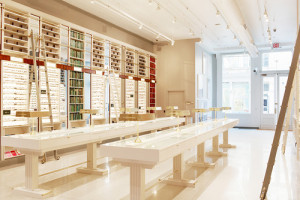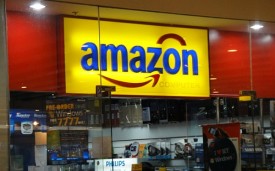What has been evident in the last few years is a natural evolution of the ecommerce world, as online-only brands have started to get into brick-and-mortar, establishing a presence into the real world. Online shopping has been an amazing opportunity for customers since its inception due to its convenience and more recent advances in personalisation, social sharing, flash sales, and on-demand customisible products.
However, despite the wild popularity of online shopping, theres still something to be said for interacting with products in real-life. Here’s why physical retailers aren’t going away anytime soon:
1. The advantage of being able to physically interact with products is an essential factor for decision making. People want to touch and feel clothes, try them on, play with a new gadget or smell a fragrance before buying it. Sometimes even the most digitally savvy online shoppers desire to experience products and brands physically.
2. Delivery isn’t always easy. People are increasingly spending their time out of their homes during the day, working long hours with non-standard schedules - much of which is enabled by the always-connected nature wireless devices and smartphones. Lets face it, it easy to miss the delivery of a purchase that requires a signature - which then requires you to go and collect it from a far warehouse at inconvenient hours.
3. Omnichannel strategies are becoming a great part of the physical store experience, since retailers are engaging shoppers with new technologies to make the shopping process more fun and customised.
Have a look at how some of the biggest ecommerce brands are now exploring physical retail and getting relevant benefits from it.
I. Warby Parker, the eyeglass company selling retro-style glasses online, opened its first physical retail store in New York City, which is designed to look like an old, classic library. Here people can try on items, which are not behind a glass as it normally happens, but left out in the open. This strategic move to brick-and-mortar helped the retailer to create a strong brand recognition, by providing people with a real-life experience in a physical store.
II. Amazon is planning to open a test store in their home town of Seattle to showcase and sell a variety of products and gadgets. The fact that the largest online retailer is now getting its toes into the physical world insinuates that the need to compensate for the disadvantages of being internet-based only is quite imperative.
III. Made.com, the online home ware retailer, has opened a physical showroom on the ninth floor of a west London office tower, featuring QR codes and miniature 3D-printed models of furniture. The 400-square-meter Showroom is located next to the company’s offices in Notting Hill and displays a variety of the website’s most popular furniture and lighting products. Here visitors can scan QR codes to find out more about products, play with miniature furniture models and take home postcards and fabric samples. According to CEO and founder Ning Li, “the future for Made.com is a convergence of online and offline, using the showroom to improve the online retail experience”. (http://www.dezeen.com/2012/09/24/online-retailer-made-com-launches-physical-showroom/)
In fact, the concept of showroom has probably existed for tens of years, but as a slightly different experience. While in the past the main objective of having a showroom was displaying the retailer products, now it starts to be more related to the online environment, as a strategic attempt to enhance the ecommerce platform.
The lesson we learn from these examples is that customers still live in a physical world and technology represents a great tool to complement human interaction and exploration, instead of replacing it. Innovative online brands are trying to extend their customers’ offline lives, bringing the best of online into the physical store.


